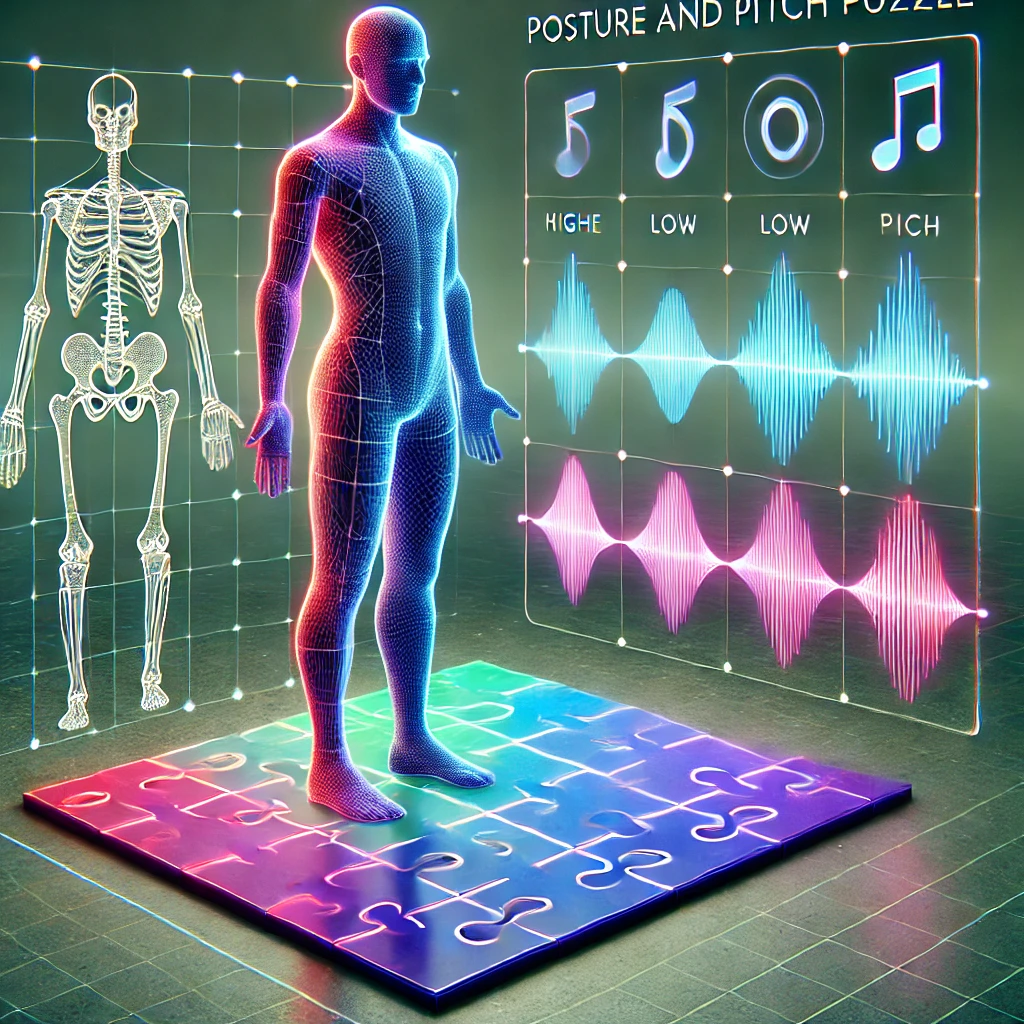
Lesson Objectives
- Enhance your speaking fluency through diverse, interactive tasks.
- Understand the basics of public speaking.
- Overcome initial fears related to public speaking.
- Use voice modulation, pacing, and body language to enhance speech delivery.
- Engage in role-playing scenarios to simulate real-life situations.
Here’s a brief presentation to help you understand the importance of public speaking and the different scenarios where you might need to use it in your life:
Structuring Speeches
Effective speech structuring is essential for delivering clear, impactful presentations. The way information is organized can significantly influence the audience’s understanding and engagement.

Below, you’ll find some key strategies and components for structuring speeches that can help any speaker deliver their messages with more clarity and persuasiveness.
Understanding the Purpose
- Define the Objective: Begin by clearly defining the purpose of the speech. Is it to inform, persuade, entertain, or inspire? The objective will guide the structure and content.
- Know Your Audience: Tailor the speech structure based on the audience’s knowledge level, interests, and expectations. This alignment helps in making the speech more relevant and engaging.
Basic Structure of a Speech
- Introduction: The introduction sets the stage and grabs the audience’s attention. Components to include:
- Hook: Start with a strong opening statement, a startling fact, a quote, or a question to pique interest.
- Purpose Statement: Clearly state the purpose of the speech.
- Overview: Briefly outline the main points that will be covered.
- Body: The body is where the main information is detailed, organized logically or thematically to best suit the material and audience:
- Logical Order: Arrange points in a logical sequence (e.g., chronological, spatial, cause and effect).
- Use of Headings: Employ clear headings for each main point to guide the audience through your speech.
- Supporting Evidence: Enhance key points with statistics, quotes, stories, or real-life examples to provide depth and credibility.
- Conclusion: The conclusion reinforces the main points and leaves a lasting impression:
- Summarize Key Points: Concisely recap the main arguments or insights.
- Call to Action: If appropriate, end with a call to action, encouraging the audience to think or act differently based on the speech.
- Memorable Close: Conclude with a thought-provoking statement or quote that reinforces the central message.
Enhancing Speech Through Design Elements
- Transitions: Use transitions between sections to maintain flow and keep the audience engaged. Transitions can also help reinforce the logical progression of ideas.
- Visual Aids: Incorporate visual aids like slides, charts, or videos to support key points and maintain audience engagement. Ensure they are integrated smoothly into the speech.
Practicing Delivery
- Rehearse: Practice delivering the speech multiple times to become comfortable with the flow and content.
- Timing: Ensure each section is appropriately timed to maintain interest and meet time constraints.
- Feedback: Seek feedback from others and refine the speech as needed.
Adjustments Based on Feedback
Iterative Improvement: After practicing or delivering the speech, consider feedback to make necessary adjustments. This could involve clarifying complex points, enhancing stories for greater emotional impact, or simplifying language.
Regarding the basic structure of a speech, here is a more detailed explanation of what should be included in each section of the speech:
Introduction
- Hook: Start with something that grabs the audience’s attention. This could be a surprising statistic, a provocative question, a powerful quote, or an interesting anecdote.
- Example: “Did you know that 90% of our oceans are still unexplored? Imagine what mysteries lie beneath the waves.”
- Purpose Statement: Clearly state the purpose of the speech. What do you want to inform, persuade, or entertain the audience about?
- Example: “Today, I want to talk about why we should pay more attention to ocean exploration.”
- Overview: Briefly outline the main points you will cover. This sets expectations and helps the audience follow along.
- Example: “We’ll explore the unknown creatures of the deep sea, the potential for scientific discoveries, and how you can contribute to ocean conservation.”
Body
- Point 1: Begin with your first main point. Provide evidence, examples, or anecdotes to support this point.
- Example: “First, let’s dive into the incredible biodiversity of the deep sea. Just last year, scientists discovered over 200 new species in a single expedition.”
- Point 2: Move to your second main point, ensuring a smooth transition from the first. Each point should build on the last, maintaining audience engagement.
- Example: “This biodiversity is not just fascinating; it has practical implications. Many medical breakthroughs, including treatments for diseases, have been developed from marine organisms.”
- Point 3: Conclude the body with your strongest or most impactful point, pulling in more supporting details.
- Example: “But how can we all contribute? By supporting ocean conservation efforts and being aware of our environmental impact, we help protect these valuable resources.”
Conclusion
- Summary: Briefly recap the main points you’ve discussed. This reinforces the key messages of your speech.
- Example: “So, we’ve seen the unknown wonders of the deep sea, their importance to science and medicine, and our role in their preservation.”
- Call to Action: End with a call to action or a thought-provoking statement that encourages the audience to act or reflect.
- Example: “Let’s embrace the mystery of our oceans – not only to discover hidden treasures but to preserve them for future generations.”
- Closing Remark: Leave the audience with a memorable closing line that ties back to your hook or the theme of your speech.
- Example: “As we look up at the stars in the sky, let’s not forget the stars hidden in the depths of our oceans, waiting to be discovered.”
More Resources:
Article: CLICK HERE: How to you structure your speech to deliver it in a clear and persuasive way
Voice Control: Using Volume, Tone, and Pace Effectively

Mastery of volume, tone, and pace not only enhances clarity and engagement but also helps convey your emotions and emphasis, adding depth to your spoken words. Let’s explore each element in detail:
Volume
- Definition and Importance: Volume refers to how loud or soft your voice is during a speech. Proper volume ensures that your message is audible to the entire audience, regardless of their proximity. It helps maintain attention and prevents strain for both the speaker and listeners.
- Techniques:
- Project Your Voice: Use your diaphragm to project your voice clearly across the room without shouting. This can be practiced through breathing exercises that strengthen your diaphragm.
- Adjust According to Space: Be mindful of the size of the room and the number of attendees. Larger spaces may require a louder voice or amplification.
- Dynamic Volume: Vary your volume to emphasize key points or to evoke specific emotions, increasing engagement and impact.
Tone
- Definition and Importance: Tone involves the emotional quality or mood expressed in your voice. It reflects your attitude towards the subject or the audience and can significantly affect the audience’s perception of your message.
- Techniques:
- Match Tone to Content: Use a serious tone for serious topics and a lighter tone for more casual or humorous segments. Consistency between your tone and message reinforces your points.
- Express Emotions: Allow your natural emotions to influence your tone when appropriate, as this can enhance authenticity and connection with the audience.
- Practice Variability: Work on varying your tone to avoid monotonous speech, which can disengage listeners. Exercises in mimicking various emotional speeches can help develop this skill.
Pace
- Definition and Importance: Pace refers to the speed at which you speak. Controlling your speaking pace helps in maintaining listener interest and ensures that your message is clear and comprehensible.
- Techniques:
- Natural Pace: Aim for a conversational pace—neither too fast, which can be overwhelming, nor too slow, which might bore the audience.
- Pause for Effect: Use pauses strategically before or after important points to let the information sink in or to generate anticipation.
- Adapt to Audience Feedback: Be observant of the audience’s reactions. If they seem confused or disinterested, adjust your pace accordingly.
Integrating Voice Control
- Comprehensive Practice: To effectively integrate volume, tone, and pace, practice speaking in various scenarios—both simulated and real. Record yourself to identify strengths and areas for improvement.
- Feedback: Regular feedback from peers, mentors, or through public speaking forums can provide insights into how your voice control techniques are perceived and what adjustments may be needed.
Voice control is more than just how you sound; it’s about making your voice work for you to maximize the impact of your spoken words, ensuring that your message is not only heard but also felt and remembered.
Body Language: Understanding the Impact of Non-verbal Cues in Speech Delivery
Effective use of body language can enhance the impact of your speech, reinforce your words, and build a connection with your listeners.
Importance of Body Language in Public Speaking

Reinforcement and Contradiction: Body language can either reinforce what is being said or contradict the verbal message. For instance, nodding while stating agreement strengthens the message, whereas crossing arms or fidgeting might suggest discomfort or disagreement, even if the words express openness.
Engagement and Rapport: Effective body language helps maintain the audience’s interest and facilitates a stronger rapport. Eye contact, for instance, can make each member of the audience feel involved and addressed personally, which increases engagement.
Credibility and Confidence: Speakers who use positive body language are often perceived as more confident and competent. A strong posture and purposeful movements can convey authority and command respect.
Key Aspects of Body Language in Speech Delivery
Facial Expressions
- Expressing Emotions: Your facial expressions can convey a wide range of emotions, from happiness and enthusiasm to concern and empathy. Matching your facial expressions to your words increases the authenticity of your message.
- Engagement: Smiling naturally at appropriate points in the speech can make you seem more approachable and relatable.
Gestures
- Reinforcing Points: Use hand gestures to emphasize points. For example, enumerating points on your fingers can help the audience track with your arguments or points.
- Natural Movements: Avoid overusing or underusing gestures. Too many can be distracting, while too few may make you seem stiff or uninterested.
Posture and Movement
- Posture: Standing straight, without being rigid, projects confidence and helps maintain proper breathing and vocal projection.
Eye Contact
- Connection: Maintaining eye contact with various audience members creates a feeling of direct conversation and keeps listeners actively engaged.
- Inclusivity: Ensure to distribute eye contact across the entire audience, rather than just focusing on a particular section or individual.
Enhancing Body Language Skills
- Practice: Rehearse your speech in front of a mirror or record yourself to observe and improve your body language. Pay attention to what your unconscious habits are saying about you.
- Feedback: Get feedback from trusted friends or colleagues on your body language during presentations or speeches.
- Professional Training: Consider workshops or training sessions focused on non-verbal communication to deepen your understanding and enhance your skills.
Examples of Effective Speech
NEWS ANCHORS
Analyzing news anchor clips is an excellent way to observe and learn from professionals who excel in the use of voice and body language for effective communication. Here are a few notable examples:
CLICK HERE: Anderson Cooper – CNN
CLICK HERE: Robin Roberts – Good Morning America
ACTOR INTERVIEWS
Observing actor interviews is another valuable way to learn how professionals in the performing arts use their voice and body language to convey emotions, even in a non-theatrical setting. Here are several examples of actor interviews that are particularly noteworthy for their expressive use and could be beneficial for studying tone and body gestures:
Meryl Streep
What to Notice: Streep often changes her tone to match the emotional context of the stories she shares about her characters. Her facial expressions are vivid, which helps the audience to feel the emotion she’s describing.
Hugh Jackman
What to Notice: Jackman’s enthusiasm is palpable through his expressive tone and body language. He often uses spatial gestures to describe scenes or actions, adding a dynamic element to his interviews.
HISTORICAL SPEECHES
Reviewing historical speeches is another excellent way to understand the power of effective public speaking. Here are several famous speeches that are renowned for their impact and eloquence. Each of these speeches can be analyzed for its rhetorical techniques, emotional appeal, and historical significance:

“I Have a Dream” by Martin Luther King Jr. (1963)
- Perhaps one of the most famous speeches in American history, delivered during the March on Washington for Jobs and Freedom. King’s speech passionately advocates for racial justice and equality, using repetitive phrases and vivid imagery to inspire a vision of a better, more inclusive future.

“Address to the United Nations” by Eleanor Roosevelt (1948)
- Known for advocating the Universal Declaration of Human Rights, Eleanor Roosevelt’s speech at the UN is a powerful call for global cooperation in promoting and respecting human rights. Her speech underscores the importance of international collaboration and human dignity.
Overcoming Anxiety

Overcoming nervousness and anxiety when speaking in public is a common challenge for many people. Here are some effective techniques designed to help manage and reduce anxiety before and during public speaking:
Preparation and Practice
- Thorough Preparation: Familiarity with the material boosts confidence. Spend ample time preparing your speech. Understand the key points you want to convey, and how you want to deliver them.
- Rehearse: Practice your speech several times. You might rehearse in front of a mirror, record yourself, or practice in front of friends or family to gain feedback and grow accustomed to delivering your speech to an audience.
Familiarization with Venue and Equipment
- Visit the Venue: If possible, visit the speaking venue beforehand to familiarize yourself with the environment. Standing on the stage and practicing where you will deliver your speech can help reduce anxiety.
- Check Equipment: Know the tools you will be using, such as microphones, projectors, or laptops. Familiarity with these can reduce stress caused by technical issues.
Breathing Techniques
- Deep Breathing: Practice deep breathing exercises to calm your mind and body. Focus on slow, deep breaths before and during your presentation to control hyperventilation and reduce tension.
- Relaxation Techniques: Engage in relaxation techniques such as progressive muscle relaxation or visualization. For example, imagine giving a successful speech and receiving applause.
Mindset and Perspective
- Positive Thinking: Replace negative thoughts with positive affirmations. Instead of thinking, “I’m going to fail,” tell yourself, “I am well-prepared and will do well.”
- Acceptance: Understand that some nervousness is normal, and even beneficial, as it can be channeled into energy and enthusiasm.
Physical Preparation
- Physical Exercise: Engage in physical activity before the event. Exercise releases endorphins, which can elevate your mood and decrease stress levels.
- Avoid Stimulants: Reduce or avoid intake of caffeine and sugar before speaking, as these can increase anxiety.
Audience Engagement Techniques
- Start with a Question or Quote: This can break the ice and make you feel more connected to the audience.
- Maintain Eye Contact: Try to make eye contact with different people in the audience. It makes the experience more personal and engaging for both you and the listeners.
Watch this TED Talk titled ‘How I beat stage fright,’ where the speaker shares his personal journey for overcoming one of the most common fears people face: stage fright.
RELAXATION AND BREATHING EXERCISES
Learning simple relaxation and breathing exercises is essential to manage nervousness, especially before engaging in activities like public speaking.
Why Relaxation and Breathing Exercises?
- Reduce Stress: These exercises help lower the body’s stress responses, making it easier to manage anxiety.
- Improve Focus: By calming the mind, relaxation and breathing techniques improve concentration and mental clarity, which are crucial for effective speaking.
- Enhance Control: They give individuals a sense of control over their physiological responses, such as heart rate and sweating, which can be triggered by nervousness.
Simple Relaxation Exercises
Progressive Muscle Relaxation (PMR)
- Explanation: PMR involves tensing and then relaxing different muscle groups in the body. This contrast helps to highlight sensations of relaxation.
- Practice:
- Sit comfortably and close their eyes.
- Tense each muscle group (e.g., feet, legs, stomach) for about five seconds and then relax it for 30 seconds, noticing the release of tension.
- Start from the toes and move upwards towards the head.
Visualization
- Explanation: Visualization, or guided imagery, involves forming mental images of a place or situation that you find calming.
- Practice:
- Ask students to close their eyes and imagine a peaceful setting, such as a beach or a quiet forest.
- Guide them to focus on the details in this scene, such as the sound of waves or the smell of trees, which can help divert the mind from anxious thoughts.
Breathing Exercises
The 4-7-8 Breathing Technique
- Explanation: This technique, developed by Dr. Andrew Weil, involves breathing in for 4 seconds, holding the breath for 7 seconds, and exhaling for 8 seconds. This helps regulate breathing and reduces anxiety.
- Practice:
- Exhale completely through their mouth.
- Close your mouth and inhale quietly through your nose to a mental count of four.
- Hold your breath for a count of seven.
- Exhale completely through your mouth, making a whoosh sound, to a count of eight.
- Repeat the cycle four times.
Diaphragmatic Breathing (Deep Breathing)
- Explanation: Deep breathing involves full engagement of the abdomen, not just the chest, during breathing. This maximizes the use of the diaphragm and allows for a deeper, more effective breath.
- Practice:
- Place one hand on their chest and the other on their belly.
- Breathe in slowly through your nose, ensuring that the hand on the belly rises more than the one on the chest.
- Then, exhale slowly through the mouth or nose, feeling the hand on the belly lower.
More Resources
CLICK HERE: 6 Ways to Deal with Anxiety
Learning Activities
Mini-Speech on a Personal Hobby or Interest
Objective:
The main goals of this activity are to build your confidence in public speaking, enhance your ability to organize thoughts succinctly and improve your delivery skills, specifically focusing on clarity of speech and effective eye contact.
Instructions:
- Preparation (10 minutes):
- Topic Selection: Select a hobby or interest that you are passionate about. This could range from sports, music, art, reading, and gaming, to any activity they engage in regularly.
- Outline Creation: Structure the mini-speech to help you organize your thoughts. The structure should include:
- Introduction: A brief introduction of yourselves(name, grade, etc.).
- Body: Key points about your hobby such as how you got involved, what you enjoy most about it, and any achievements or experiences you have had related to the hobby.
- Conclusion: A closing statement that might encourage others to try the hobby or express how the hobby has influenced you positively.
- Drafting the Speech (15 minutes):
- You’ll have some time to write down your thoughts based on the outline. Think about what makes your hobby special and why it might be interesting to others.
- Speech Practice (15 minutes):
- Practice your speech in pairs or small groups. Pay special attention to speaking clearly and maintaining eye contact with your listener(s).
- Peers should provide feedback focusing on the clarity of the speech and the effectiveness of the eye contact.
- Presentation Skills Workshop (20 minutes):
- Remember to use these effective public speaking techniques:
- Clarity of Speech: Speaking at a moderate pace, enunciating clearly, and using an adequate volume.
- Eye Contact: The importance of looking at the audience to engage them, how to scan the room effectively, and how to balance looking at notes versus the audience.
- Demonstrate these skills and allow students to ask questions.
- Classroom Presentation (40 minutes):
- Deliver your mini-speech in front of the class.
- As each student presents, the audience should pay attention and prepare to give constructive feedback.
- Feedback and Reflection (10 minutes):
- After each speech, you’ll receive specific feedback on both the content and delivery, highlighting effective use of clarity and eye contact.
- The audience will provide one positive aspect and one area for improvement for each speaker.
- Reflect on your performance and discuss what you felt went well and what you could improve.

Ice-Breaker Speech
Objective:
The Ice-Breaker Speech activity is designed to ease you into the world of public speaking by discussing a topic you are familiar with and passionate about—your hobbies or interests. This activity aims to boost your confidence in speaking before an audience, improve your speech delivery skills, and foster a supportive classroom environment where students learn about each other’s interests.
Instructions:
- Preparation:
- The purpose of the ice-breaker speech will be explained: to help you become more comfortable with public speaking in a low-pressure situation.
- Select a hobby or interest you are enthusiastic about. This could range from sports, music, reading, traveling, cooking, technology, etc.
- Outline Creation:
- You should create a brief outline of your speech. Structure your speech with a clear introduction, main points, and a conclusion.
- Introduction: Brief introduction to the hobby or interest.
- Main Points: Discuss why you are passionate about it, how you got started, and what you find most rewarding or challenging.
- Conclusion: A quick summary or a notable experience related to the hobby that left a lasting impression.
- Speech Delivery Practice:
- You’ll have time to practice your speeches in pairs or small groups. Peers should give your constructive feedback focusing on clarity of content, engagement strategies, and non-verbal communication like eye contact and gestures.
- Practice using a calm and clear voice, maintaining good posture, and managing any nervous habits.
- Presentation:
- Deliver your speech to the class. Set up a friendly and supportive atmosphere to help reduce anxiety.
- If possible, record the speeches so you can self-evaluate later.
- Feedback and Discussion (20 minutes):
- After each speech, there will be a brief session of audience feedback, focusing on what was done well and areas for improvement.
- The class will be engaged in a discussion. Share what you found interesting about your peers’ hobbies and what you learned about public speaking through this exercise.

Voice and Body Language Games
Objective:
This activity aims to help youexplore how different aspects of voice modulation and body language can dramatically alter the meaning and impact of spoken words. The goal is to enhance your awareness and control over your vocal tones and physical expressions during public speaking.
Description of Games:
- Emotion Variation Game:
- Objective: To demonstrate how changing the emotional tone of voice can change the message’s impact.
- How to Play:
- You’ll receive a list of simple sentences, such as “I can’t believe you did that” or “That’s a great idea.”
- Take turns saying the sentence in various emotional tones: happy, angry, sad, excited, etc.
- The audience guesses the emotion based on the speaker’s voice and body language.
- Charades with a Twist:
- Objective: To highlight the role of body language in conveying information without spoken words.
- How to Play:
- Similar to traditional charades, but instead of guessing a movie or book title, guess the emotion or action being portrayed.
- Act out an emotion or a scenario using only body language, no words.
- Volume and Pace Control:
Objective: To practice how varying volume and speaking pace can affect clarity and audience engagement.
How to Play:
You’ll receive a short paragraph to read aloud.
Read the same paragraph three times, each with a different volume and pace: once softly and slowly, once loudly and quickly, and once at a normal speaking volume and pace.
The class discusses which approach was most effective and why.
Mock News Report
Objective:
This activity aims to enhance your public speaking skills by focusing on voice control and body language within the context of delivering a news report. By emulating professional news anchors, you will learn how to effectively communicate information in a clear, engaging, and authoritative manner.
Instructions:
- Preparation:
- Topic Selection: Select a current event or a topic of interest. This could range from international news, local events, sports, or cultural happenings. The topic should be timely and relevant to ensure engagement.
- Research: You will be given time to research your chosen topic. You should gather key facts, statistics, and any relevant data to create a comprehensive report.
- Script Writing:
- Developing the Script: Write a short script for your news report. The script should include an introduction, the main body with detailed information, and a conclusion that summarizes the news piece.
- Incorporating Key Elements: Craft your scripts in a way that allows for the demonstration of effective voice modulation, pacing, and the use of pauses for emphasis.
- Rehearsal:
- Practicing Delivery: Practice delivering your news report, focusing on your voice and body language. You should work on maintaining an upright posture, making appropriate eye contact with the “camera” (this can be simulated by focusing on a specific point in the classroom), and using hand gestures to emphasize points without overdoing it.
- Feedback Session: Peers provide feedback on each other’s delivery, focusing on clarity of speech, fluidity, and how well they maintained a professional demeanor.
- Live Presentation:
- Studio Setup: Arrange the classroom like a news studio if possible, with a desk and chair for the anchor, and a smartphone to record the reports.
- Delivery: Each student will deliver their news report in front of the class. Treat the exercise as a live broadcast, which can help increase the realism and pressure, simulating a real-world environment.
- Recording: Each presentation will be recorded. This not only helps in providing feedback but also allows you to self-assess your performance.
- Review and Feedback:
- Playback Session: Watch the recorded presentations as a class. We will discuss each student’s performance, highlighting effective uses of voice control and body language.
- Constructive Criticism: We will provide constructive criticism that you can use to improve your public speaking skills. We will discuss elements like the modulation of voice, the pacing of speech, how effectively you engaged the audience, and how natural your body language appeared.

Emotional Variations in Speech Delivery Role-Play
Objective:
This role-playing exercise is designed to help you explore and practice delivering speeches with varying emotional tones. The activity aims to enhance your ability to convey emotions effectively through your speech, which is crucial for engaging an audience and delivering impactful messages.
Instructions:
- Preparation:
- Emotion Cards Creation: Cards with different emotions written on them will be prepared, such as excitement, sadness, anger, joy, doubt, and enthusiasm.
- Speech Topics: A list of generic and neutral speech topics that can be easily adapted to various emotions will be provided. Examples might include talking about a recent vacation, describing a favorite movie, or explaining how to perform a simple task.
- Role-Play Setup:
- Divide the Class: The class will be split into small groups of 3-4 students. Each group will perform their role-plays in front of each other to simulate a mini-audience.
- Distribute Materials: You’ll be given a set of emotion cards and a list of speech topics.
- Role-Playing:
- Selection: Draw an emotion card at random and select a speech topic.
- Preparation Time: You’ll have 5-7 minutes to prepare your short speech. You should think about how to infuse the chosen emotion into your delivery, considering aspects like tone of voice, facial expressions, and body language.
- Performance: You will take turns delivering your speech to your group. Exaggerate the emotional aspect to enhance the learning experience.
- Feedback Session:
- Peer Feedback: After each speech, peers will provide feedback focusing on how convincingly the emotion was communicated. Questions for feedback might include:
- Did the emotion come across clearly and believably?
- How did the speaker’s voice, pace, and body language contribute to or detract from the emotional delivery?
- What could be improved to make the emotion more impactful?
- Self-reflection: Reflect on your own performance and identify any challenges you faced during the exercise.
- Peer Feedback: After each speech, peers will provide feedback focusing on how convincingly the emotion was communicated. Questions for feedback might include:
- Group Discussion:
- Share Insights: We will reconvene as a whole class and share insights from your experiences. Discuss the importance of matching emotional tone with speech content.
- Review and Conclude:
- Review Key Takeaways: Summarize the key techniques learned about conveying emotions through speech.
- Encouragement: continue practicing emotional variations in their speeches to better connect with future audiences.

Expressive Reading Relay
Objective: Improve your speaking fluency by practicing different types of voice modulation while maintaining proper posture.
Instructions:
- Preparation:
- You will work in pairs. Each pair will receive a list of short phrases or sentences, each designed to be read with a specific modulation (e.g., excitement, sadness, authority).
- There will be a “Modulation Mystery Wheel” with different emotions or speaking styles on it.
- Task:
- Spin the Modulation Mystery Wheel to determine the speaking style you will use (e.g., whispering, shouting, cheerful tone).
- Stand up straight with good posture: feet shoulder-width apart, shoulders back, and head held high.
- Read the assigned phrase or sentence to your partner using the modulation style from the wheel.
- Your partner will guess the emotion or style you were aiming for and provide feedback on your posture and voice modulation.
- Class Activity:
- After all pairs have completed their turns, come together as a class and discuss which modulation styles were easiest or most challenging.
- Share tips on how to maintain good posture while varying your voice.
- Gamification Element:
- Krugs: Earn Krugs based on how accurately your partner guesses the modulation and on your demonstration of good posture.
- Bonus Krugs: Extra Krugs are awarded for creative use of modulation and for staying in character.
Example:
- Phrase: “This is the best day ever!”
- Modulation: Cheerful and enthusiastic tone, while maintaining confident posture.

The Great Debate
Objective: Practice problem-solving by debating solutions to common issues.
Instructions:
- Pair Work: Pair up with a classmate and choose a problem to solve (e.g., “How to reduce plastic waste at school”).
- Debate: Each pair will present their solutions, and the class votes on the most feasible idea.

Negotiation Practice
Objective: Develop negotiation skills through role-playing.
Instructions:
- Pair Work: Partner up and role-play a negotiation scenario (e.g., “Asking for a raise”).
- Class Discussion: Share experiences and discuss effective strategies.

Customer Service Challenge
Objective: Improve problem-solving and communication skills in customer service contexts.
Instructions:
- Group Work: Form groups and act out a customer service scenario where one person is the customer and the others are representatives.
- Feedback: The group provides feedback on how well the situation was handled.

Posture and Pitch Puzzle
Objective: Enhance your speaking fluency by mastering posture and pitch through a collaborative puzzle-solving activity.
Instructions:
- Preparation:
- You will be divided into small groups of 3-4 students. Each group will receive a set of “Posture and Pitch Puzzle Cards.”
- The cards will include various speaking scenarios and challenges that require you to use specific postures and pitch levels.
- Task:
- Draw a card from the deck, which will describe a scenario (e.g., giving a speech, telling a story) and specify the posture and pitch you must use.
- Stand up straight with the assigned posture (e.g., hands on hips, arms crossed) and speak in the specified pitch (e.g., high pitch for excitement, low pitch for seriousness).
- Your group will listen and provide feedback, helping you adjust your posture or pitch if needed.
- Class Activity:
- After all groups have completed their challenges, share the most interesting scenarios and how you adjusted your posture and pitch to fit the situation.
- Discuss as a class how different postures and pitches can affect the message you are trying to convey.
- Gamification Element:
- Puzzle Mastery: Collect puzzle pieces as you complete each challenge. The first group to complete their puzzle earns a special bonus of Krugs.
- Challenge Boost: Earn a “Challenge Boost” power-up for an extra 10 Krugs if you can demonstrate your posture and pitch in front of the class with no mistakes.
Example:
- Scenario: “Announcing a big surprise to your friends.”
- Posture: Standing with open arms.
- Pitch: High pitch to express excitement.

Speak Like a Pro Tournament
Objective: Refine your speaking fluency by practicing posture and modulation in a competitive tournament setting.
Instructions:
- Preparation:
- You will compete individually in a tournament-style challenge. The teacher will prepare a list of topics that require you to speak confidently while demonstrating good posture and effective voice modulation.
- Topics will be related to everyday scenarios, such as “persuading a friend,” “sharing exciting news,” or “giving instructions.”
- Task:
- Round 1: Stand in front of the class with proper posture (e.g., feet shoulder-width apart, shoulders relaxed) and speak on a given topic. Focus on using voice modulation to match the topic (e.g., using a calm tone for giving instructions, an excited tone for sharing news, etc.).
- Round 2: The winners of Round 1 will face off with new topics, and you’ll need to adjust your posture and modulation based on feedback from Round 1.
- Round 3: The finalists will compete with the most challenging topics, demonstrating mastery of both posture and modulation.
- Class Activity:
- After each round, your classmates and teacher will provide feedback on your posture, modulation, and overall delivery. Use this feedback to improve in the next round.
- As a class, discuss the importance of posture and voice modulation in effective communication.
- Gamification Element:
- Champion’s Reward: The overall winner of the tournament receives a Champion’s Trophy, which comes with extra Krugs and the title of “Fluency Pro” for the week.
- Participation Boost: Even if you don’t advance to the final, you can earn participation Krugs by offering helpful feedback to your peers.
Example:
- Topic: “Convincing your parents to let you go on a school trip.”
- Modulation: Use a respectful and persuasive tone, while standing with a relaxed but confident posture.

Anxiety Reduction Techniques
Objective:
This activity is designed to equip you with effective techniques to manage and reduce public speaking anxiety, specifically through deep breathing exercises and positive visualization. These skills are crucial not only for improving public speaking but also for handling stressful situations in various aspects of life.
Instructions:
- Introduction to Techniques (10 minutes):
- Anxiety: It can affect performance, particularly when speaking in public. The physiological responses to stress, such as increased heart rate and shallow breathing.
2. Deep Breathing Exercises (15 minutes):
- Practice Session:
- Sit comfortably with your hands on your stomachs to feel your diaphragm move.
- Inhale slowly through your nose, ensuring your stomach expands, and count to four silently.
- Hold your breath for a count of four, then exhale slowly through the mouth for another count of four.
- Repeat the cycle for a few minutes, focusing on steady, slow breaths.
3. Positive Visualization (15 minutes):
- Guide to Visualization: visualization involves picturing oneself successfully achieving a task, like delivering a perfect speech.
- Visualization Practice:
- Close your eyes and visualize the following scenario in detail: You are standing in front of an audience, feeling confident and calm. The audience is engaged and reacting positively. See yourself speaking clearly and confidently, handling the presentation material effortlessly.
- Focus on the positive feelings associated with this success, such as pride, happiness, and relief.
- Sharing Experience: After the visualization, share how you felt during the process and what specific aspects helped boost your confidence.
4. Combining Techniques (10 minutes):
- Combine both techniques before an upcoming speech or another stressful event. Use deep breathing right before you begin to speak and employ visualization in the days leading up to the event.
- These techniques can be adapted to other stressful situations in life, not just public speaking.
5. Reflection and Feedback (10 minutes):
- Let’s discuss about how these techniques can be integrated into our daily routines.
- Give your feedback on your experience with the exercises and any changes you noticed in your stress or anxiety levels.
